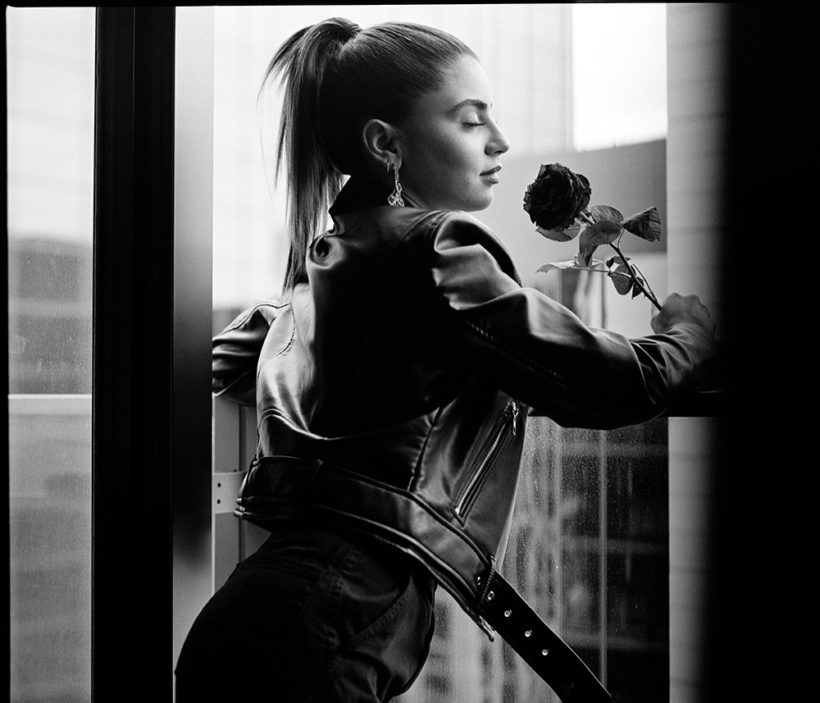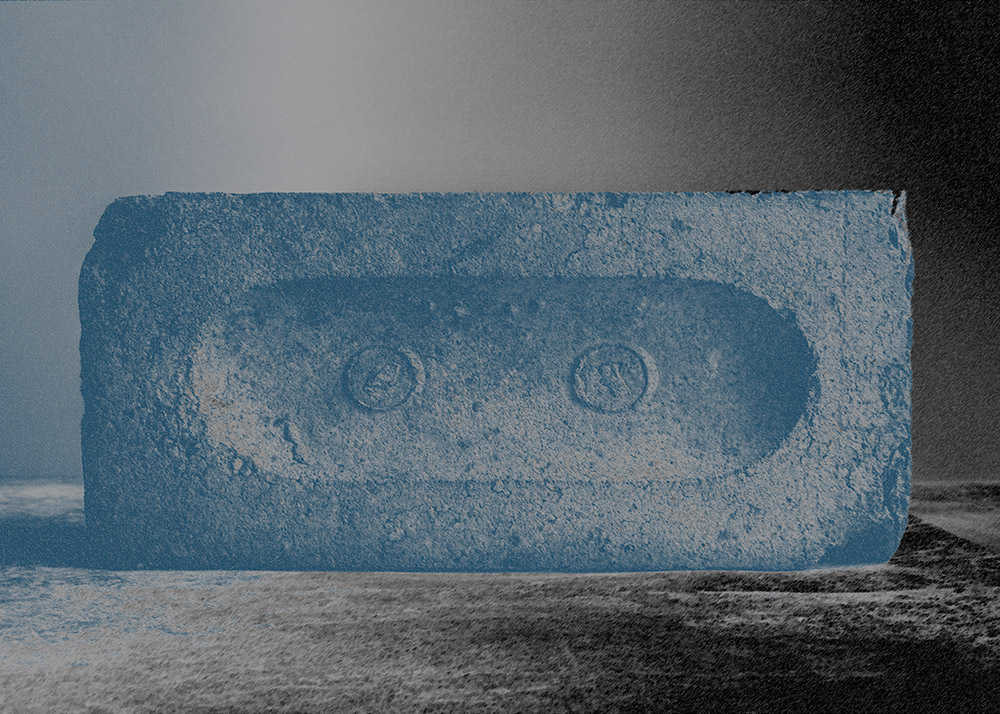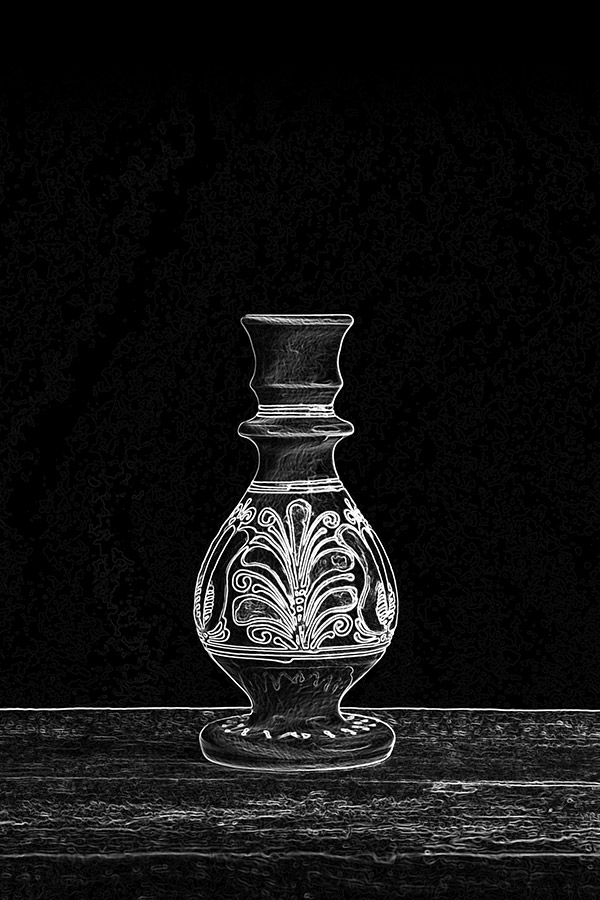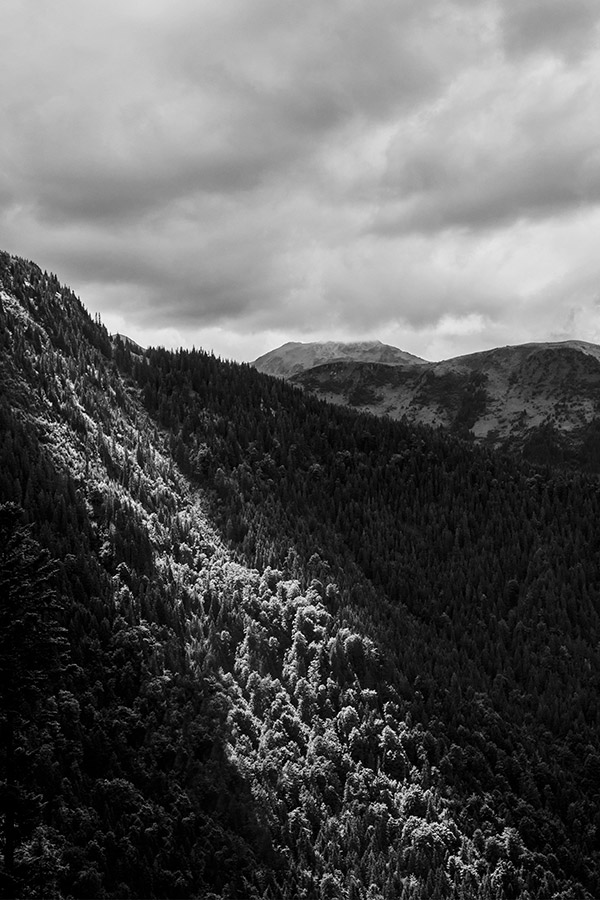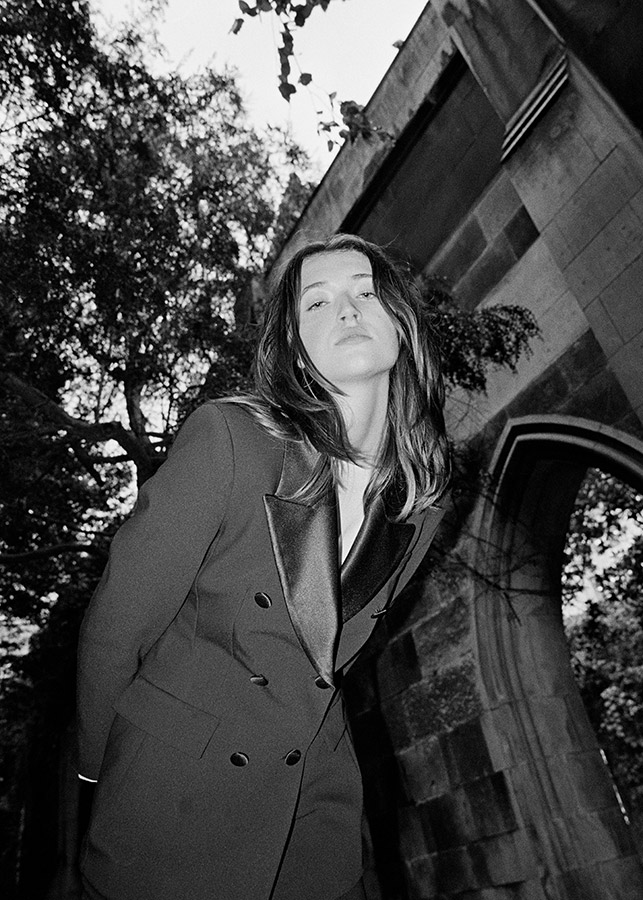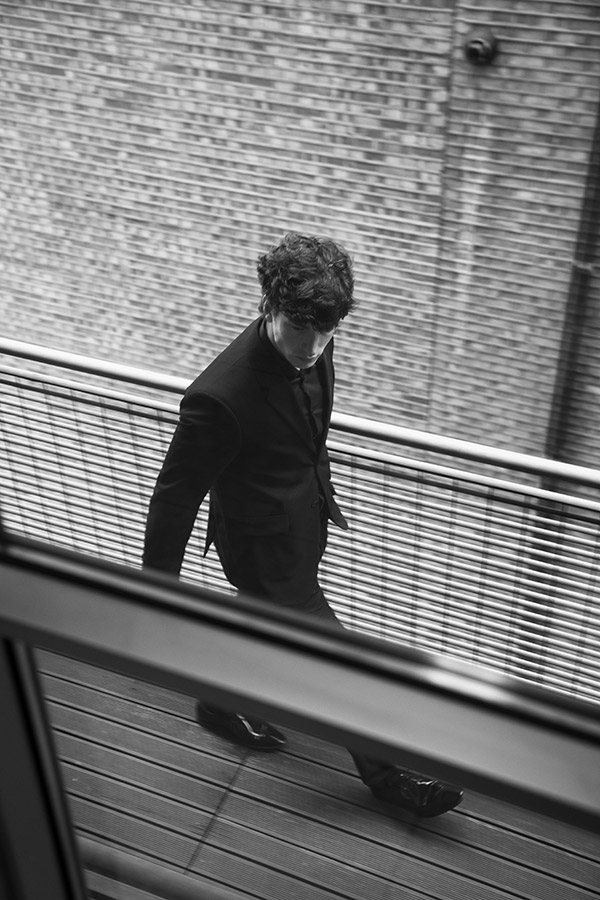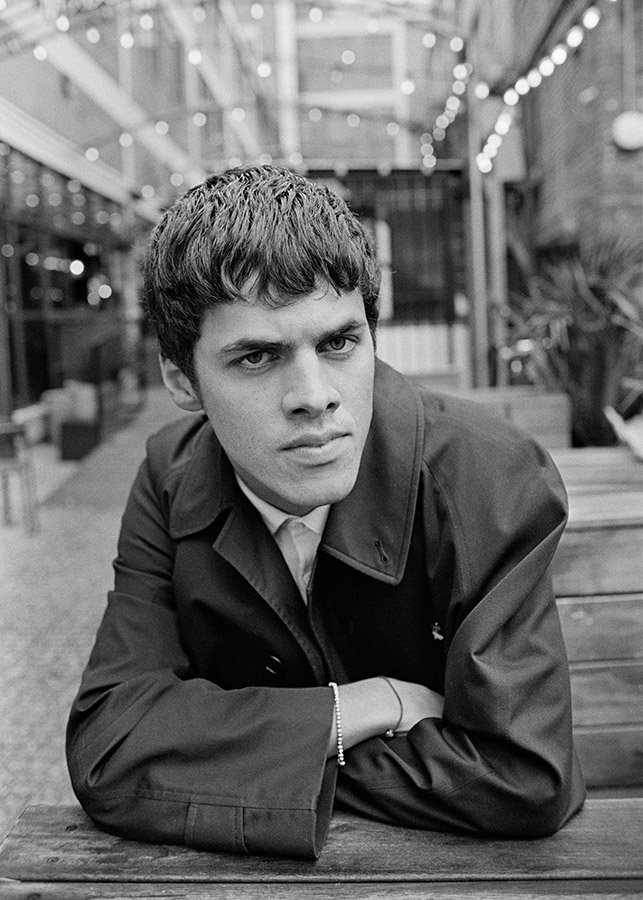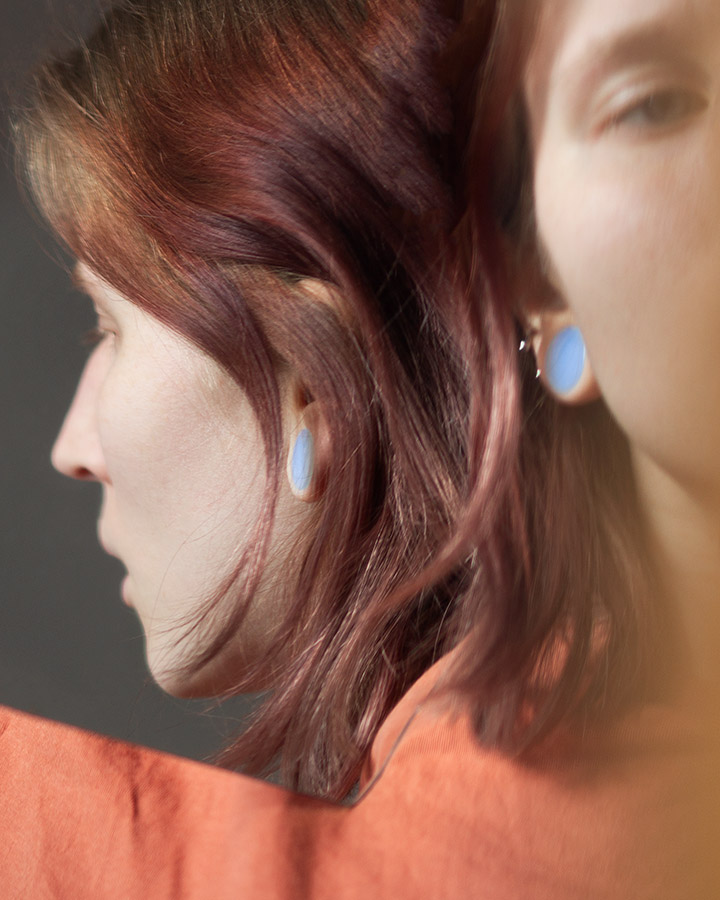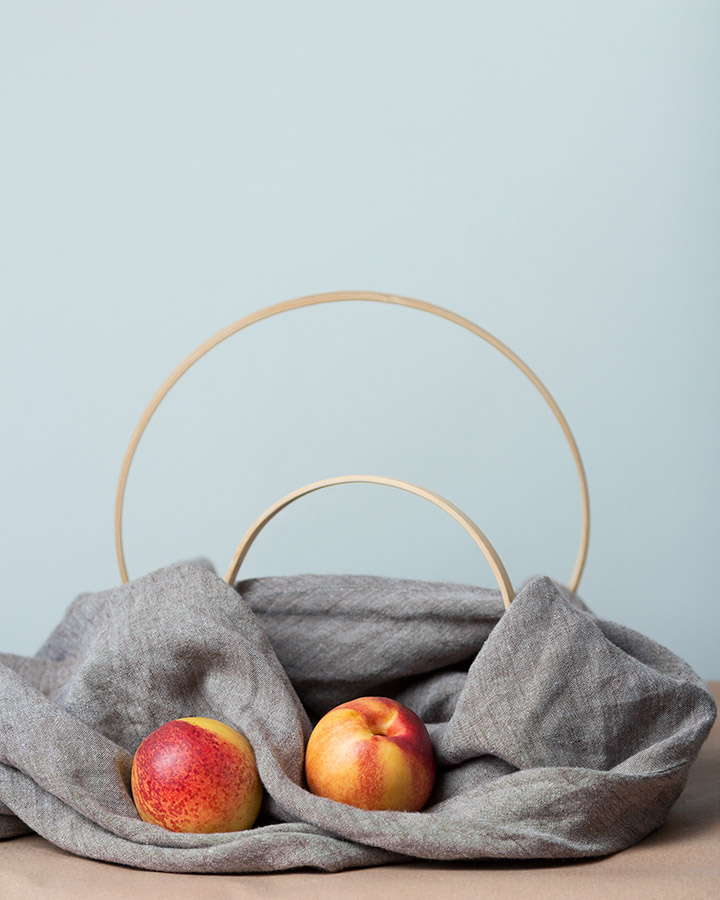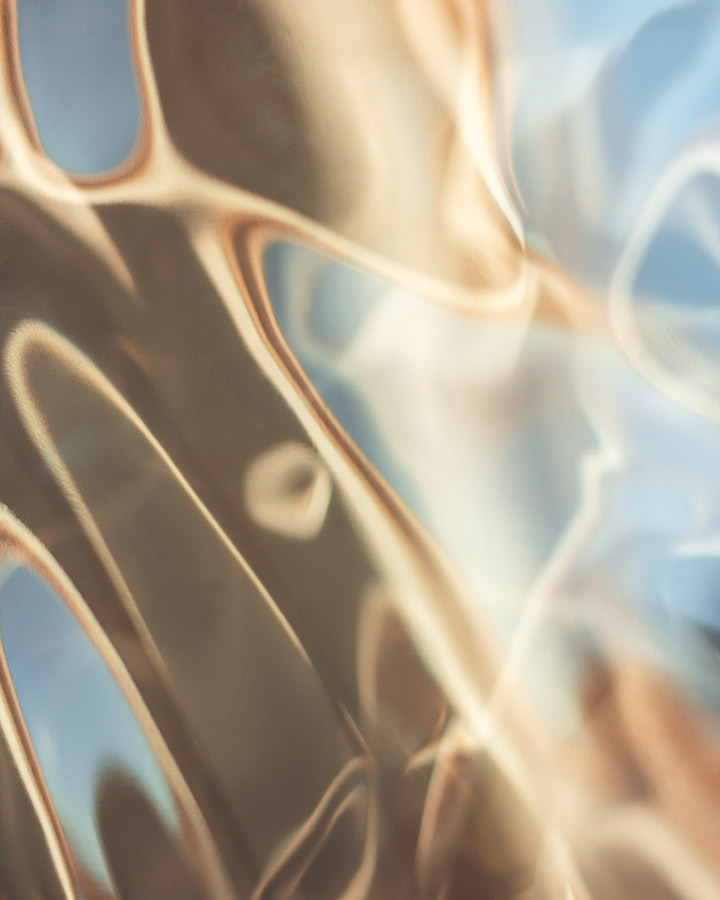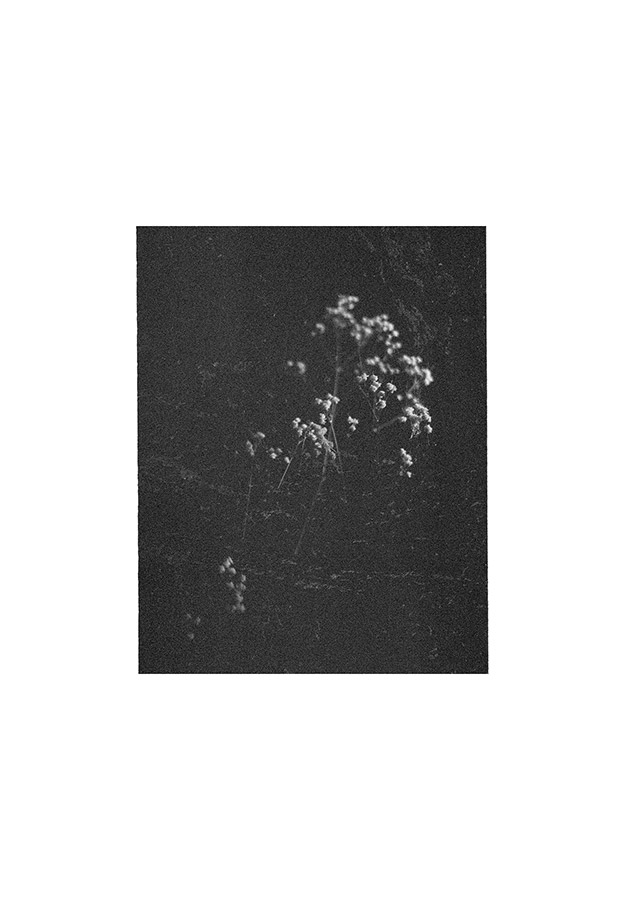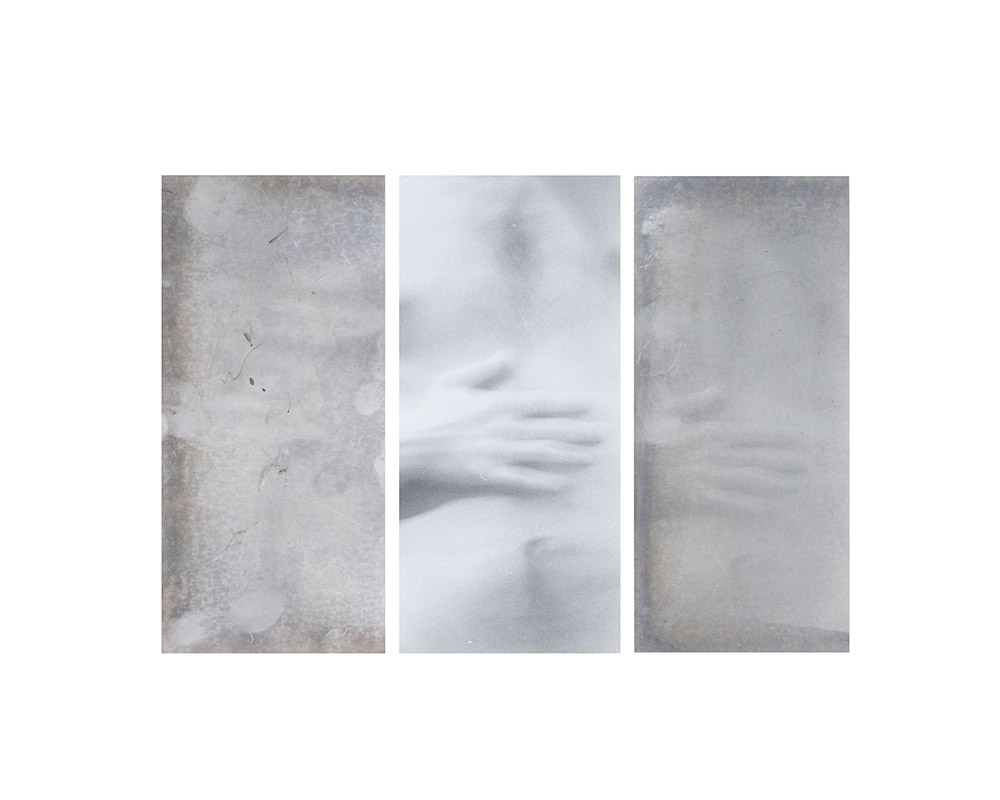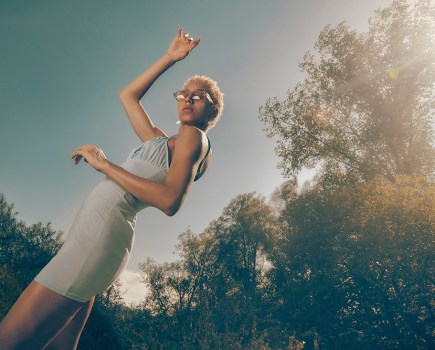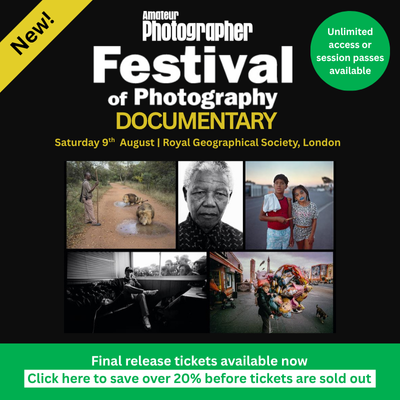Jessica Miller visits the graduate show by Final year BA (Hons) Photography students from University of Middlesex. Below, the students share more about their projects and advice for those looking to get into photography.
Andra Chiru – Unforeseen
Throughout the year I mostly used my Sony A7 R3 digital camera, but I also photographed with Pentax K1000 and Mamiya RZ67. The lenses that I used for this project were: Zeiss FE 1.8/55mm, Sony 16- 35mm/f4 and Canon 85mm/f2.8. I also used artificial lighting photographing in my own ‘home’ and university studio at Middlesex as well. I used Profoto lighting kit and Godox as well.
Can you tell me about yourself and how you got into photography?
I have been a freelance photographer for the past three years, beginning as a small event photographer and after pursuing my BA in Photography at Middlesex University. I’ve spent most of the past four years shooting small weddings, families, portraits, landscape and still life and learning about this beautiful field.
I unfortunately cannot claim to have been an avid photographer for the entirety of my life. It has only been in recent years that I have get more into the art form of photography. And once discovered it was unlike starting any other hobby, to me it felt closer to reuniting with an old friend, no other activity before or since has felt so natural to me. It is never too late to follow your inner gut, even if you are a mature student. Never say never! Originally, I am from Romania and I live in London with my husband and our two little dogs, Charly and Sunny, since 2013.
I think deep down the desire to become a photographer has been within me for a long time but it wasn’t until a particularly bleak period in my life that I finally made the choice to begin my relationship with photography. I was suffering from fairly intense and constant anxiety. Constantly in a state of disorientating fear I needed a way to ground myself. My sister gifted me a Nikon camera and I was thinking all the time that I am not good enough to take good pictures.
I always was attracted by the world around me. Through this particular camera I tried to capture living moments not just for my personal album, but for all to share with them beauty, pain, love and every colour of our earth’ soul. I spent much of my spare time walking around taking photographs, learning all that I could through a combination of both trial and error and a helpful online course for beginner photographers.
I used the internet to discover the foundation of photography that interested me the most and found out about the photographers who define these styles. I was heavily inspired by different Romanian photographers like Sorin Onisor, Alina Lesan, Paul Padurariu, Alex Robciuc but also by Mark Galer, John Greengo and Tony Northrup. All these photographers had similar styles that are all heavily complemented by Photoshop and Lightroom which I have now begun to use in my images too.
I enjoy photographing interesting and alternative portraits this has led to me photographing friends and family. I am my biggest critic and I have begun to understand that my own improving will never end. All the time there will be something to develop, to make it better. I will not stop refining my skills. I believe that the more you work and learn, the more you will know and the better your work will become.
For me, photography is more than a hobby or a way of making memories, discovering new places, people, values and traditions. It is an art, a place where I am allowed to express myself, with the only boundaries being the ones which I create – it’s a way to share the beauty I receive every day of my life.
Now my work tends to be conceptual, and reflective, and it is often quiet and deeply personal. My style changed, my understandings about photography and what represents too. My inspiration right now is Tessa Traeger, Kurt Tong, James Ravilious, Tadas Kazac, Anne Sliver, Laura Pannac, Lydia Golbatt, Miho Kajioka and Marin Amis, and the books that had a big impact on me are The quickening: a memoir on matrescence by Ying Ang, Hiroshima Graph: Rabbits abandon their children by Yoshikatsu Fujii and The restoration will by Mayumi Suzuki.
Can you tell me more about your project?
In the beginning of my third year, I knew that I wanted to create a continuous project. The project was split in three parts during the entire year. So, the project documented the expression of my inner thoughts and feelings, influenced by Romanian culture and traditions. My childhood memories, my grandparents’ way of life and the dream imagery are a precious heritage for me, and this was the main inspiration for my book and this project.
The second part continued with images that really made me felt at home here in the UK, my foster home. They reflected exactly my feelings generated by my own wellbeing found in a home from home, where I am right now, in England where curiously I can associate them in my mind with the customs of my native places.
Generally, I followed the traces of photography, not always driven by my feelings for my homeland. I am a seeker, eager to know the truth of reality, to dispel myths through clear evidences wherever I am. In these forays, photography becomes an introspection of each meridian, revealing landmark events, the peculiarities of each cultural identity, nation or ethnic group in different areas.
In the third part, I focused also on the Romanian & British identity, traditions and customs specific to both countries. I curiously associated them in my mind with the customs of my native places. Revealing the traces of photography, I discovered old stories and I wrote new ones, but their themes were so similar, especially when I focused on history and traditional heritage.
Through my project, I tried to highlight the diversity and importance of what Romanian and English heritage means today. Using photographers from both countries, I was able to show that there are geographic, social, and cultural differences but similarities too, because for the most of us, the thoughts of cultural identity, belonging and traditional heritage have only one meaning, of home.
I wanted to eschewed the traditional iconography in favour of landscape, objects, symbols, (broken down in still life) in a personal and impersonal way, like an identity exploration.
All these traditional values offer the possibility of reconstructing a spiritual history located in a point of the ethnic universe where it intersects and from which both the past and the present can be seen. The Romanian popular tradition remains a matrix of the Romanian spirit.
The final form of the project consisted in a book with texts to create a connection to facilitate the viewer’s understanding.
How did you select the photographs for your show?
Editing and observation, helped me to choose the most appropriate ones to tell the story in a way as close as possible to reality, however I wanted to keep some ambiguity ford the final selection. I liked the combination of black and white more, and also the fact that I worked on some of them in such a way that I managed to highlight certain specific details to my country.
I felt the black and white ones would be more visible and would accentuate certain elements of composition and the colour ones would bring the emotion and the natural light of the sun that remained in my soul as a child. (the brick) There should be a fluency and a link, some understanding, not too obvious, between the images because the ambiguity can stimulate the viewers’ way of thinking.
What are your future plans?
I will continue to photograph landscape / travel / still life, always carrying a story completed by editing a book. But following my collaboration with MoDa Museum, I discovered that I am very attracted to this field, and its promoting on the online environment, social media platforms. I can see myself working in this field creating content, discovering new stories from the past or present, and finding new ways of sharing this knowledge with the viewers. I am going to work as a freelance photographer and trying to find a suitable job for me in the creative industry.
I will be working following my deep inner emotions addressing to an audience that have the same concept as me about art. I don’t look for everybody acceptance because beauty means diversity, and difference. I will trust my intuition always aware that everything comes at the right place and time.
Do you have any advice for others wanting to get into or study photography?
- Don’t be afraid to start!
- Believe in yourself, learn as much as you can, be open minded.
In terms of technical advice:
- It would be good to understand the exposure triangle
- Learn to use Aperture Priority and Shutter Priority modes
- Don’t be afraid to raise the ISO, learn to adjust white balance
- Learn to read the histogram
- Play with perspective, understand the rule of thirds, pay attention to the background, invest in a tripod, shoot in the early morning and evening
- Invest in some good photo editing software, be selective and learn from your mistakes!
Caroline Rooke – Correspondence
Can you tell me more about yourself and how you got into photography?
I had been a self taught professional portrait and events photographer for twenty years before immersing myself in a full time photography degree which concluded in June 2022. I had always had a love of photographing the natural environment since I was young. What became the surprise and a delight was seeing my work develop into a more abstracted fine art practice, with a strong instinct and expression towards line making.
Can you tell me about your project?
My final year project ‘Correspondence’ in essence is a focus of the nature of light, an awareness of the passing of time and the physical movement of the breath within the body. The work is underpinned and titled within the spiritual philosophy of Hermeticism. The second hermetic principle is the Principle of Correspondence which states, ‘as above, so below; as below, so above’. It signifies a truth correlating the mental, physical, and spiritual planes of existence, saying that all things between these planes are connected and manifest.
My practice and expression solidified during lockdown. When arriving at the project of Landscape in my second year, I spent a few weeks of that time in isolation at home having to make work from my first floor window unable to leave home. It was during this time that my meditation practice and my observations of light deepened. The Landscape project needed a minimum of six images and my constraints meant I needed to make the work from my one view point of the trees outside my window.
I saw the constraints as a challenge and from that time began to watch a new style and observance develop. It was a natural progression to my final year project which I still made locally photographing trees, but this time venturing further than my first floor window. I make all my work in camera using digital and film cameras, utilising slow shutter speeds and my body movements to give the visuals of movement and a painterly quality.
How did you select which photographs would be included in your show?
I chose to make only one photograph for the Free Range show and printed it large. Blue Moon One was printed 40”x60” and framed in a thin white wooden frame. For me this photograph expresses the Principle of Correspondence perfectly, especially as the thin white line left of centre is the full moon.
I have always visualised this body of work as large images and it felt very satisfying seeing it printed big and up on a wall at the show. The complete portfolio for this project was made with archival quality digital prints and hand printed fibre prints which I printed in our university darkroom.
What are your future plans?
I love making work in the darkroom and will continue to experiment in the darkroom when I start my part time Photography MA next. I started to experiment with printing onto metal towards the end of my degree and am excited to develop this technique further. I am hoping going forward to continue my creative practice and have the opportunity to exhibit more work.
The other thing that came to light for me during my degree was the joy of facilitating other in their learning. In addition to developing my own practice I would also like to share my knowledge and enthusiasm with others by becoming a photographic technician in an educational setting.
Do you have any advice for others looking to get into or study photography?
My simple advice for anyone wanting to study, no matter how ‘mature’ a student you would be is to do it! I did forge a career being a self taught photographer, but the nurturing environment of a university and being surrounded by other creatives has strengthened my passion and commitment to my practice. I have arrived at new place with my work and expression and I am loving it. I have learnt so much about photography and myself over the past three years, it’s been an experience I will forever be grateful for.
Connery Ademokun
- Mamiya RZ67 Pro ii w/ 110 F.28 Lens. Usually shooting HP5 film stock
- Canon 5D mkIV w/ 24-70mm F2.8 & 50mm 1.2 lenses
Can you tell me about yourself and how you got into photography?
My cousin is actually a photographer, so since I was young, she would allow me to play with some of her equipment (under her supervision, of course), and I just fell in love with the feeling of getting a shot I really liked, and it became my thing.
Can you tell me more about your project?
A main philosophy for my work is to create work that feels timeless. I try to create images that look like they could have been taken 20 years ago or 20 years in the future. These images represented that for me, and that’s why I chose them. The main inspiration for this is the work of Peter Lindbergh. I’ve been a fan of his ever since I discovered what fashion photography was, and it wasn’t until I looked at the dates on some of his shots that I realised how long ago some of his images were taken.
These images were mostly taken in collaboration with modelling agencies in London. While I was at university, I would contact these agencies and ask to work with some of their newer models in exchange for images.
How did you select photographs for your show?
I’ve always loved cinema and been a fan of the theatrical, and because of this, I chose the images that made me feel the same way movies do. Images that felt like they might have a backstory or further context beyond what is seen.
What are your future plans?
I recently moved to Atlanta, I plan to get into film production and cinematography with plans in the future to open up my own photography studio working on fashion imagery by the Grace of God.
Do you have any advice for others looking to get into or study photography?
Jump into the deep end. You’ll never get anywhere thinking you’re not good enough. Go out and shoot, make mistakes and be willing to learn from them. Don’t let pride stop you from growing. I had the best photographic experiences of my life this way, and it worked for me.
Is there anything else you’d like to tell us?
I would like to add that there is still a lot for me to learn. I am still learning to perfect my craft and push myself as an artist. Ultimately, I would like to come out of this career experience with a body of work I can be proud of, and I am consciously taking the necessary steps to fulfil this.
Gabija Grisute – A Play Of Light
Canon 600D with a basic 55mm zoom lens for the most part in my project as well as an 85mm lens.
The reflector has been used to balance the light in some of the images, especially still life. I used natural light for all of these images.
Can you tell me about yourself and how you got into photography?
I got into photography since I was young, about 8 years old, when my parents got a very basic digital camera. I just started taking pictures of everything around me, to appreciate the beauty and preserve memories. I am a quiet and curious observer. I like to express myself and my opinion about the world through art that I create. I like to analyse myself and other people behaviour and social environment.
Can you tell me more about your project?
This project was about coming to terms with myself and appreciation of beauty. I live with anxiety disorder and struggle with my self image. I created this project treating myself as a work of art in progress, trying to look at myself and appreciate myself as much as I appreciate a lot of other beautiful things.
Things that might look insignificant to some. Like the light of the sun dancing on a wall. These little moments represents joy and living in the moment without worrying about the past, present or future. The series in my portfolio are a reflection of a day in my life, little beautiful moments through the day, chaos in my head, dissociation, struggle with self image and peace as I reflect on myself and my day.
This project was about healing and self discovery. I connected a few types of photography and tried new things. It was spontaneous abstract images and self portaiture, thoughtful still lifes and experimentation with colour film photography. I was inspired by many different photographers, like Laura Letinsky, Ziquian Liu and Charlotte May to name a few.
How did you select photographs for your show?
The photographs in the show were chosen following a conversation with my tutors, it was meant to represent each chapter of my A Play Of Light series.
What are your future plans?
My future plans are continuing to produce my own individual projects, but also being active in commercial portrait and still life photography. For now I am based in London, but I am thinking of moving to Brighton in the near future.
Do you have any advice for others looking to get into or study photography?
My tips for starting photographers would be to simply start and play. Don’t think about if the picture is good enough for posting on social media, take pictures like no one will ever see them, have fun and then start building your style/career out of it. Do it for yourself first and then turn it into something bigger! I want my work to inspire people to appreciate little moments. To stop and see beauty in yourself or the world around you just for a little bit.
Paulo Madureira – UnTraces
I used a Wista 45 Large Format Camera for the glass plates and a Konica 35mm for the other images.
Can you tell me about yourself and how you got into photography?
I’m from Portugal and came to London four years ago to study International Politics and Law. Soon I found out that the course was not right for me so I transferred to Photography. What really motivated me to start a Photography course was to express myself artistically. I chose this medium specifically as I was more familiar with it.
I’ve been photographing since I was around 13 and I started shooting film when I was 17. Mainly, I documented my life. I photographed my friends and family and landscapes of my city (Porto). But as I started the course and as I learned more about the history of photography I got interested in different analog processes. I think photography has a lot of potential and a lot to offer to contemporary art as there’s still a lot to be explored.
Can you tell us more about your project?
I was in my third and last year when I started UnTraces. During that time, students were given a task to write about their prospects for the future and what they wanted to specialize in after uni. I was dedicated to becoming a fashion photographer, but only because I couldn’t experiment in the darkroom the year before because of COVID. So I thought I had a pretty clear plan. But that idea changed a few months after.
I was printing some negatives from a fashion shoot in the darkroom when I started experimenting. Being in the darkroom alone felt like meditation for me. I enjoyed it a lot. It made me think that I should do more of that. So, for the next project, I decided to do a study on film photography and darkroom techniques. The best way to do that was to make self-portraits because I wouldn’t need to rely on other people for modeling.
This would be a more intimate body of work, I thought to myself. Opening up in that way would be quite challenging seeing that I grew up in a household where I couldn’t express myself freely. Having an oppressive figure throughout my childhood made me very reserved and quite conscious about my body, my mannerisms, and my looks. So I took the challenge to the extreme and photographed myself naked.
I played with the shutter speed and ended up with a lot of blur and weird shapes. Comparing those images with the ones where I could see myself clearly, I preferred the blurred ones. Not showing my body made me comfortable. In this sense, I wouldn’t need to show my body realistically in order to represent it. So I used that approach for the next shoots. I then printed them in the darkroom, experimenting with chemigrams, cropping sizes, mixing chemistry, etc. I ended up with a series of abstract images. A response to my body dysmorphia. That was the first part of the project.
Having good feedback from my tutors and peers about the final result made me feel accomplished. Seeing the potential this project had, I fell deeper into the alternative techniques. I was doing research for my dissertation when I came up with Sally Mann’s work. More specifically, the glass plates she shot of her husband. I immediately fell in love with her work and with that process. I started my research about dry glass plate photography.
At first, I thought I wouldn’t be able to do it because we’re not allowed to use collodion in the darkroom. But I found out that it is possible to coat glass with gelatine emulsion. So I bought liquid light and some glass plates, and I started experimenting. It was quite complicated to gain full control of this process.
First I would have to consistently coat the plates (note that’s not the case for most of them) and prevent people from coming to the darkroom and turning on the lights. Then, finding the sensitivity (ISO) of the emulsion in a light-controlled environment, using the studio and flashes. It was also my first time handling a large format camera, and because it wasn’t mine I had to be extra careful. The chemistry was also really tricky to handle.
The developer for instance had to be at exactly 20 degrees celsius not to ruin the emulsion (the emulsion may shrink or peel off of the glass if the chemistry is too cold). All these (and other) aspects were to be considered. But when I finally was comfortable enough with the process, I photographed my partner. This was aligned with the initial concept as he is a strong inspiration for me and helped me fight that inner shame I mentioned earlier. Also because it would be harder to do self-portraits with a large format camera.
Summing up, UnTraces is a symbiosis between an artistic response to my inner fears and my excitement toward alternative photography. It helped contextualize my practice and what to do onward.
How did you select the photographs for your show?
The editing process was really tricky. So we had two different exhibitions, and I had a different layout for each. In the Free Range Exhibition because there were only white walls and very limited space I couldn’t make any experiments. So I went really minimal by sticking the images to the wall and exhibiting just one glass plate.
Choosing the photographs was a really tough job. I spent a few days deciding which photos to use. I printed all the photos on regular paper and very small. I then made a lot of layouts on the wall with the help of technicians. When I finally chose which layout to use, I sent it to the curatorial panel (my tutors) to be approved. They approved it at first. However, on the day of the exhibition, though I had the prints ready, I still made some changes.
I think making a layout or choosing pictures for a show is really a never-ending job (until the exhibition itself). We might make a good plan of how we want an exhibition to look but when you’re at the venue things may not look as intended and that’s ok.
What are your future plans?
Right now I’m working at Middlesex University as an administrator for the Arts Faculty. Although it is not photography related, I came to realize that I don’t need a photography role to keep doing my art. In fact, having a flexible job that doesn’t require me to be in a studio all day allows me to focus more on my art.
I think the photography industry can be really competitive and that is not the prime work environment for me. So I’m choosing to step away from it, just for now. However, I will not stop making my own projects. I have a few exhibitions and publications to come. I’ve also been applying for a lot of open calls so I can put my work out there. There are a lot of exciting paths that I can follow from now on. Starting a collective with a few friends photographers is one of them. I also found a very interesting Master’s degree in Holland related to sustainable art. Who knows?
Do you have any advice for others wanting to get into or study photography?
I have two important tips:
- Do NOT enroll in a photography course as a last resort. I’ve seen so many people giving up photography courses because it’s not what they expected. Photography (like any other art) is an extensive subject that requires a lot of research, time, and effort. Make sure it’s something that really interests you before going in.
- Try different things out. Do not be afraid of experimenting with new things. It takes years to finally realise what type of photography you’re into. Until then, enjoy the ride and make plenty of mistakes as they are part of the process. The more mistakes the more you’ll learn.
Renee Gordon – Half Time
- Canon DSLR 1300D
- Sigma 18 – 35mm art lens
- Canon EFS 18 – 55mm lens
Can you tell me about yourself and how you got into photography?
I’ve always been involved in the visual arts as well as the performing arts. From a young age it has always been a form of escapism for me, where I found expressing myself through my work most important as it helped me work through the highs and lows of my young teenage mind.
As my work has developed throughout the years, I’ve taken more of an interest in expressing those around me as well as myself, that being individuals whom I have close relationships with such as my friends and family members. I started off my creative journey through drawing and painting which was mostly around the human form.
It’s always fascinated me, capturing people, faces and their story or state of mind. Once I was old enough to be trusted with handling photography equipment at my old secondary school, I soon began to play around with digital cameras. This started out as snapping pictures of my friends, which then turned into creating little projects and producing a lot of portraiture or fashion photography work. I began to experiment with the camera by incorporating what I liked to create with my drawings. Crossing the two art forms still inspire me and strengthen my artistic vision when it comes to photographing today.
Can you tell us more about your project?
Growing up in my foster parents house it progressively accumulated football memorabilia overtime and stories that came alongside them. I had never taken an interest in my dad’s passions or hobbies – especially football. It is the one thing I could not comprehend and probably will never quite understand. A lot of my focus with my work had been what I would consider “artistic” or “creative” and football never fitted into those categories for me personally.
What inspired me to carry out my project “Half-Time” was to use my passion as a way to capture someone else’s and meet in the middle that way. I always listened to my dad talk enthusiastically about football as if it was his life and I was curious as to where it had all come from. I started the process by having conversations with him about football and why it is so important to him and as I began to understand more I was further inspired to create a line of work to portray football in a different light.
A light other than stereotypical crazed football hooligans we see in the stands at matches or loitering around the city on match day. What I captured with my dad seemed more personal as a lot of his sentiments stemmed from his childhood and brought a whole new perspective to why football was/is significant.
I started the project around the house, I photographed memories, picture frames and keepsakes with my dad beside me the whole time telling me about them. I captured candid images of him flicking through books and holding these objects before we moved to adventuring down memory lane to childhood locations like his old family home and parks he played in as a kid. For each of the shoots we collectively went through a process of talking and forming understanding with each other and documenting his emotional responses when going over his past.
My dad described the experience as bitter sweet, a mixture of nostalgia, love and loss. We had some emotional days together but it was amazing to give him a space to fully express his passion and to be understood.
How did you select the photographs for your show?
Choosing photographs to include in the show was a process. I came at it from the point of view of not wanting to reveal too much about the project outrightly, similar to the blurb of a book. I wanted the viewers to instantly recognise it as a football related project, but the other images that followed to suggest it was something deeper.
The three images I wanted had to be different from one another and reference certain aspects within my project, in my mind when curating the potential three images I wanted one to represent a space, an object and my dad. So with my final three images for the show I had selected an image of the park my dad has played in as well as his children, himself in his favourite part of the house where he spends time looking through his books and collections and the old football boots he wore when he was young.
What are your future plans?
My future plans are to explore further opportunities within photography as well as art and design. I plan to do more freelance work and continue to develop my skills and meet new people outside of my immediate bubble. I would love to travel to do this also, to see more of the world and continue making memories and capturing other individuals’ stories.
BA (Hons) Photography at Middlesex University
Find out more about studying BA (Hons) Photography at Middlesex University London here.
See more student work here:
Westminster graduates demonstrate resilience in degree show
Falmouth students share diverse techniques in Gweles exhibition
UWE students share first exhibition post-pandemic
University of Gloucestershire students share new perspectives at photojournalism show
Middleman: the degree show by University of Portsmouth
Birmingham City students: elevating into the photographic industry

